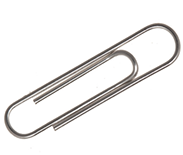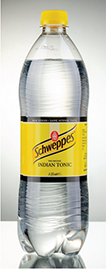4.1 Metric Measurement System
Chapter 1 presented a brief overview of the decimal system. Because of its accuracy, the decimal system is used in pharmacy measurements. Based on subdivisions and multiples of 10, the metric measurement system uses decimals to indicate tenths, hundredths, and thousandths.
Identifying Metric System Units of Measurement
The metric system has three basic units of measurement: meter, gram, and liter (see Table 4.1). The meter, the unit for measuring length, has limited use in a pharmacy. A patient’s height is often measured in feet and inches but may be measured in meters or centimeters. One meter (1 m) is approximately three feet (3 ft), or 39.37 in. The gram, the unit for measuring weight (mass), is used in a pharmacy for measuring the amount of medication in a solid dosage form and for indicating the amount of solid medication in a solution. One gram (1 g) is the weight of one cubic centimeter (1 cc) of water at 4° C. The liter is the unit used for measuring the volume of liquid medications and liquids for solutions. One liter (1 L) equals 1,000 milliliters (1,000 mL), and one milliliter (1 mL) is approximately the volume of one cubic centimeter (1 cc).
 Put Down Roots
Put Down Roots
The words meter, gram, and liter have their roots in the Greek language. The word meter is from the Greek term metron, meaning “measure”; the word gram is from the Greek term gramma, meaning “small weight”; and the word liter is from the Greek term litra, meaning “pound.”
Table 4.1 Metric Units of Measurement
Metric Unit |
Measurement |
|---|---|
meter (m) |
length |
gram (g) |
weight (mass)* |
liter (L) |
volume |
* Mass is a measurement of how much matter is in an object; weight is a measurement of how hard gravity is pulling on that object. Your mass is the same no matter where you are (Earth, the moon, another planet), but your weight differs based on where you are. To prevent confusion, the gram is used as the unit of measurement for weight. |
|
Using Metric System Prefixes and Abbreviations
Metric system prefixes, such as the ones shown in Table 4.2, are added to the names of the basic units to designate larger or smaller values of these units. These prefixes indicate a power of 10 by which the basic units are multiplied or divided. For that reason, metric system prefixes have the same meanings for all basic units. For example, the basic unit gram can be multiplied by 1,000 to create the smaller unit milligram and can be divided by 1,000 to create the larger unit kilogram. The three prefixes most commonly used in pharmacy calculations are kilo–, milli–, and micro–.
 Safety Alert
Safety Alert
Pharmacy technicians should exercise caution when working with metric system abbreviations. For example, the abbreviation for milligrams (mg) may be mistaken for the abbreviation for micrograms (mcg).
All metric system units also have corresponding abbreviations, as shown in Table 4.3. These abbreviations are commonly used in pharmacy practice. Medication labels, prescriptions, medication orders, and measuring devices are examples of items that contain metric system abbreviations. Therefore, you need to be familiar with these abbreviations. However, as mentioned in Chapter 3, you also need to be cautious in your interpretation of these abbreviations. For example, the misinterpretation of the abbreviation mcg as mg leads to a 1,000-fold increase in a dose.
Table 4.2 Metric System Prefixes
Prefix |
Value |
|---|---|
nano (n) |
|
micro (mc) |
|
milli (m) |
|
centi (c) |
|
deci (d) |
|
kilo (k) |
1,000 (one thousand times the basic unit or 103) |
Table 4.3 Metric System Unit Abbreviations
Measurement |
Metric Unit |
Abbreviation |
|---|---|---|
weight |
kilogram gram milligram microgram |
kg g mg mcg |
volume |
kiloliter liter milliliter microliter |
kL L mL* mcL |
length |
kilometer meter millimeter micrometer |
km m mm mcm† |
*The abbreviation mL is equivalent to the abbreviation cc, which signifies cubic centimeters. The use of the abbreviation cc is considered a dangerous practice because it can be mistaken for “u.” †Micrometer is sometimes abbreviated as μm. However, the use of the abbreviation μm is considered a dangerous practice because it can be mistaken for the abbreviation mg. |
||

One kilogram (1 kg) is equivalent to a little more than two one-pound (1 lb) boxes of pasta.

A single, large paper clip weighs approximately one gram (1 g).

Remembering the amount of liquid that is contained in a standard, one-liter (1 L) bottle will help you visualize the amount of liquid in one liter.
Most people can visualize an object that weighs a kilogram or a gram, and many individuals can create a mental picture of a container that can hold a liter or a milliliter of a liquid. However, it is more difficult to see something that weighs only a microgram. Medications that contain micrograms (mcg), or even milligrams (mg), of an active ingredient almost always contain an inactive filler so that the dosage form becomes measurable. For example, a tablet with a weight of 3 mcg would be hard to see and too small to handle. The tablets shown in Figure 4.1 contain different amounts of levothyroxine, but they are all the same size. Even though levothyroxine is available in a variety of strengths, the tablet sizes remain the same. The colors of the tablets and the package labeling differentiate the amount of active ingredient.
Figure 4.1 Levothyroxine Tablet Strengths and Colors 

Writing Parts of a Unit
Parts of a unit are written as a decimal number. For example, two-and-a-half milligrams is written as 2.5 mg, not 2½ mg. A leading zero is used if there is no whole number preceding the decimal point. For example, one-half liter is written as 0.5 L (not .5 L), and one-quarter gram is written as 0.25 g (not .25 g). These leading zeros help prevent medication errors.
 Safety Alert
Safety Alert
For a decimal value less than 1, pharmacy technicians should use a leading zero to prevent medication errors.
When writing dosage strengths, trailing zeros (unnecessary zeros after the decimal point) are generally left off to reduce the chance of misreading the values. For example, 0.25 mL, 5 L, and 15.6 mL should not be written as 0.250 mL, 5.0 L, and 15.60 mL.
4.1 Problem Set
State the abbreviation for each of the following metric units.
microgram
milligram
liter
gram
kilogram
meter
centimeter
milliliter
microliter
deciliter
Write the following numbers using an Arabic number with a decimal value and the appropriate unit abbreviation.
six-tenths of a gram
fifty kilograms
four-tenths of a milligram
four-hundredths of a liter
four and two-tenths of a gram
five-thousandths of a gram
six-hundredths of a gram
two and six-tenths of a liter
three-hundredths of a liter
two-hundredths of a milliliter
Self-check your work in Appendix A.
 (one-billionth of the basic unit, or 0.000000001 or 10−9)
(one-billionth of the basic unit, or 0.000000001 or 10−9) (one-millionth of the basic unit, or 0.000001 or 10−6)
(one-millionth of the basic unit, or 0.000001 or 10−6) (one-thousandth of the basic unit, or 0.001 or 10−3)
(one-thousandth of the basic unit, or 0.001 or 10−3) (one-hundredth of the basic unit, or 0.01 or 10−2)
(one-hundredth of the basic unit, or 0.01 or 10−2) (one-tenth of the basic unit, or 0.1 or 10−1)
(one-tenth of the basic unit, or 0.1 or 10−1)